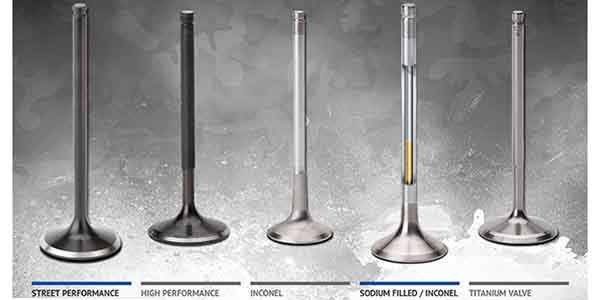Working on an engine seems like a daunting task, but it doesn’t have to be. Knowing the basics can help ensure that your vehicle runs as smoothly and efficiently as possible. One such basic thing that needs attention is the exhaust valve—an important component of keeping any engine running correctly. In this blog post, we will discuss exactly what exhaust valves are and how to properly maintain them. By understanding these components and how they work, you can take better care of your engine and ensure that it runs optimally for years to come.
What are exhaust valves?
The exhaust valve is a critical component of the internal combustion engine, opening and closing to allow the expulsion of spent gasses. Over time, exhaust valves can become damaged or warped, affecting engine performance. It is important to regularly inspect and maintain exhaust valves to ensure proper engine operation.
Exhaust valves are typically made of a material that can withstand high temperatures and pressures, such as stainless steel or titanium. They are opened by a camshaft and closed by a valve spring. Exhaust valves are also fitted with a seal at the top to prevent leakage of gasses and are lubricated by engine oil.
How do exhaust valves work?
Exhaust valves are an important part of any internal combustion engine, as they allow the exhaust gasses to be expelled from the cylinders. In order to function properly, exhaust valves must be able to open and close at the correct times and seal tightly when closed.
The exhaust valve is opened by the camshaft, which is turned by the crankshaft via a timing belt or chain. The camshaft has a lobe that pushes on the rocker arm, which in turn opens the valve. When the piston reaches top dead center, the exhaust valve is fully open. The air/fuel mixture is then ignited by the spark plug, and as the piston starts down on its power stroke, the expanding gasses push against the now-open exhaust valve, forcing it shut.
As the piston continues down on its power stroke and starts back up on its compression stroke, the intake valve will open (intake valves are opened by a different lobe on the camshaft than exhaust valves) and start bringing in fresh air/fuel mixture. Once the piston reaches top dead center again, both valves will be closed and sealed tightly until it’s time for them to open again.
How to properly maintain your exhaust valves
Assuming you have a combustion engine, your exhaust valves open to allow spent exhaust gasses to exit the cylinder. The valves then close so that fresh air/fuel mixture can enter the cylinder.
It’s important to maintain your exhaust valves because if they aren’t functioning properly, it can lead to a loss in power and fuel efficiency. It can also cause your engine to run hotter than normal which can cause pre-ignition and knock.
Here are a few tips on how to properly maintain your exhaust valves:
1. Check your owner’s manual to see what the recommended interval is for checking/adjusting your valves.
2. If you notice a loss in power or fuel efficiency, or if your engine is running hotter than normal, it’s time to check your valves.
3. You’ll need a feeler gauge to check valve clearance. Insert the feeler gauge between the rocker arm and valve stem; there should be a slight drag. If there isn’t, you’ll need to adjust the valves.
4. To adjust the intake valves, loosen the locknut and turn the adjusting screw clockwise until you feel resistance. Then, back off the screw 1/4 to 1/2 turn before tightening the locknut again. For exhaust valves, turn the adjusting screw counterclockwise until you feel resistance before backing off 1/4 to 1/2 turn and tightening the locknut.
5. After adjusting the valves, always double-check the clearance with a feeler gauge.
6. If your vehicle has hydraulic lifters, you may need to add oil to them if they are low on oil or adjust them if they are overfilled.
7. Regularly inspect your spark plugs for any signs of exhaust deposits which can be an indicator of valve issues.
Tips for troubleshooting common exhaust valve problems
If your engine is having trouble starting up, or is making unusual noises, it may be time to check your exhaust valves. Here are some tips for troubleshooting common exhaust valve problems:
1. Check for a build-up of carbon deposits on the valves. If the valves are significantly carboned up, they may need to be cleaned or replaced.
2. Inspect the valve stems for wear. If the stems are excessively worn, they may need to be replaced.
3. Check the valve seats for wear. If the seats are excessively worn, they will need to be replaced or resurfaced.
4. Inspect the valve guides for wear. If the guides are excessively worn, they will need to be replaced.
5. Make sure that the valves are properly adjusted. If the valves are not properly adjusted, they will not seal properly and can cause engine performance problems.
Conclusion
Exhaust valves are an important part of your vehicle’s engine. Knowing what they are and how to properly maintain them is essential for keeping your car running smoothly and efficiently. Proper maintenance includes inspecting the valve on a regular basis, replacing it if need be, and checking the exhaust system for any leaks or cracks. With these tips in mind, you can ensure that your exhaust valves continue to serve their purpose properly for years to come.



